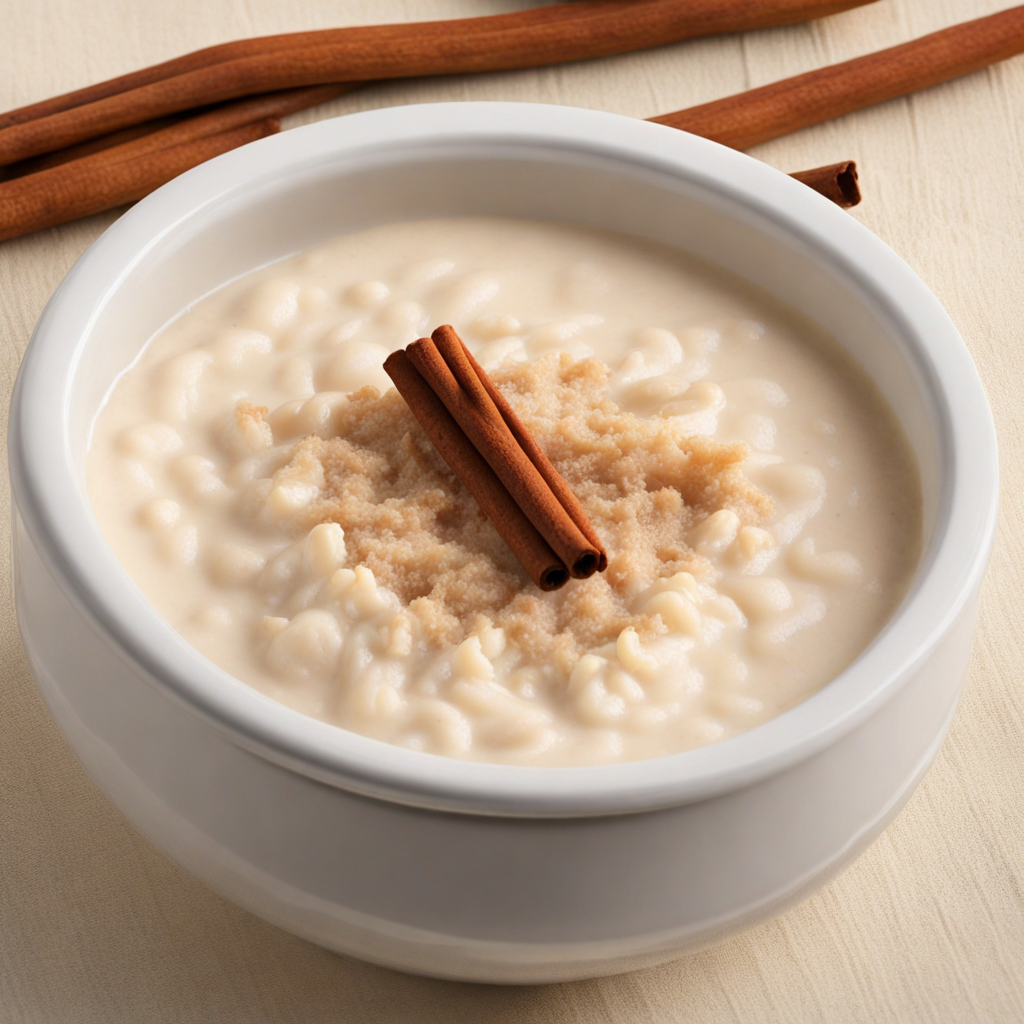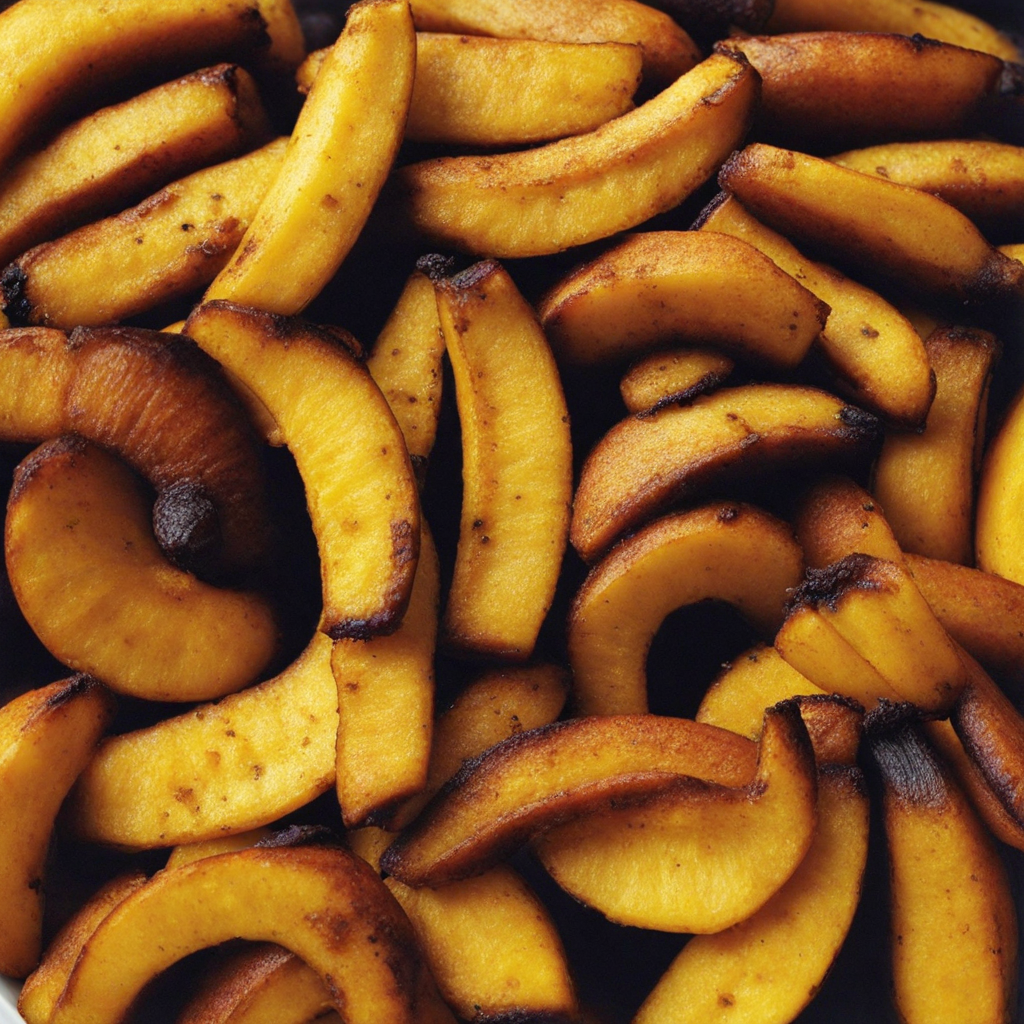Arroz con Leche
Arroz con Leche, a beloved dessert in Costa Rica, is a comforting rice pudding that beautifully combines simple ingredients into a delightful treat. The dish is made by cooking rice slowly in a mixture of milk, sugar, and a hint of cinnamon. This process allows the rice to absorb the creamy milk, becoming tender and flavorful. The addition of sweeteners enhances the natural creaminess, creating a luscious texture that is both satisfying and indulgent. As the rice simmers, the aromatic spices, particularly cinnamon and sometimes vanilla, infuse their warmth into the dish, giving it a fragrant, inviting aroma. Once the rice is cooked to perfection, the mixture is often garnished with a sprinkle of ground cinnamon or a dash of nutmeg, adding a touch of visual appeal as well as a burst of flavor. Some variations even include raisins or other dried fruits, adding an extra layer of sweetness and chewiness that makes each bite a delightful experience. Served warm or chilled, Arroz con Leche is not just a dessert but a nostalgic treat that evokes memories of family gatherings and festive celebrations in Costa Rica. Its creamy consistency, sweet flavor, and aromatic spices make it a perfect conclusion to any meal or a comforting snack on its own. Whether indulged in at a local café or lovingly prepared at home, this dish promises to introduce you to a taste that is both traditional and heartwarming.
How It Became This Dish
The Sweet Journey of Arroz con Leche: A Costa Rican Culinary Delight Arroz con leche, or rice with milk, is a beloved dessert that has earned its place in the hearts and homes of Costa Ricans. This creamy, comforting dish is not only a staple in Costa Rican cuisine but also reflects the rich cultural tapestry of the region, interweaving history, tradition, and a sense of community. To appreciate this delightful dessert fully, we must explore its origins, cultural significance, and evolution over time. #### Origins: A Culinary Crossroads The roots of arroz con leche can be traced back to the introduction of rice to the Americas by Spanish colonizers in the 16th century. Originally from Asia, rice was cultivated across various parts of the world long before it reached Latin America. The Spanish brought rice to the New World, and it quickly became a staple in local diets. The concept of rice pudding is not unique to Costa Rica; variations of this dish can be found globally. In Spain, "arroz con leche" is made with short-grain rice, milk, sugar, and flavored with cinnamon and lemon zest. As the Spanish colonizers settled in Central America, they brought their culinary traditions with them, leading to the emergence of a localized version of the dish. In Costa Rica, the indigenous peoples and the Spanish settlers began to blend their culinary practices. The indigenous populations had long used corn and other grains, while the Spanish introduced dairy products, which were not part of the native diet. This merging of ingredients and techniques resulted in a unique version of arroz con leche that would come to symbolize Costa Rican comfort food. #### Cultural Significance: A Taste of Home Arroz con leche holds a special place in the hearts of Costa Ricans, often evoking memories of family gatherings, celebrations, and childhood. This dessert is not only a popular treat but also a symbol of hospitality and warmth. For many Costa Ricans, preparing arroz con leche is a cherished ritual passed down through generations. The dish is commonly served during special occasions and celebrations, including birthdays, holidays, and family reunions. In many households, it is a customary dessert at Christmas time, enjoyed alongside other traditional dishes. The aroma of simmering rice and milk, infused with the warmth of cinnamon, fills the air, creating a sense of nostalgia and togetherness. Moreover, arroz con leche is often associated with the beloved tradition of "merienda," an afternoon snack that brings families together. For children, it is a delightful treat that often follows a day of school or play. This simple dessert serves as a reminder of the importance of family and community in Costa Rican culture. #### Development Over Time: From Tradition to Innovation As with many traditional dishes, arroz con leche has evolved over time. The basic recipe has remained largely unchanged, but variations have emerged that reflect the growing influence of globalization, innovation, and dietary preferences. The classic Costa Rican version of arroz con leche combines rice, milk, sugar, cinnamon, and sometimes vanilla. The rice is typically cooked slowly in milk, allowing it to absorb the creamy goodness while becoming tender. Cinnamon sticks are often added for flavor, and the dish is usually served warm or chilled, dusted with a sprinkle of cinnamon on top. In recent years, as Costa Rica has embraced culinary innovation and a more health-conscious approach to eating, variations of arroz con leche have emerged. Chefs and home cooks alike have begun experimenting with different ingredients to cater to diverse tastes and dietary needs. For instance, some have replaced regular milk with coconut milk or almond milk, offering a lactose-free option that retains the dish's signature creaminess. Others incorporate natural sweeteners like honey or agave syrup instead of refined sugar, appealing to those seeking healthier alternatives. Additionally, the growing trend of fusion cuisine has inspired creative takes on arroz con leche. Some chefs have introduced tropical ingredients like mango, passion fruit, or even chocolate, infusing the dish with new flavors that reflect the region's bountiful produce. These innovative versions have helped to keep the dish relevant and appealing to a new generation of food lovers. #### A Culinary Ambassador Arroz con leche has transcended its humble origins to become a culinary ambassador for Costa Rica. As more people travel to the country or explore Costa Rican cuisine through restaurants and food festivals, this dessert serves as an introduction to the flavors and traditions of the nation. In recent years, there has been a resurgence of interest in traditional Costa Rican food, with chefs and home cooks alike emphasizing the importance of using locally sourced ingredients. This movement has sparked a renewed appreciation for the simplicity and heartiness of dishes like arroz con leche, which highlight the country's agricultural bounty, from the rich dairy produced in the central highlands to the diverse varieties of rice grown in the region. Moreover, as Costa Rica continues to promote its cultural heritage, arroz con leche has become a symbol of national identity. The dish is often featured in culinary competitions and festivals, celebrating the country's gastronomy and fostering pride in local traditions. Efforts to document and preserve traditional recipes ensure that future generations will continue to enjoy this beloved dessert, keeping its legacy alive. #### Conclusion: A Sweet Legacy Arroz con leche is more than just a dessert; it is a reflection of Costa Rica's rich history, cultural significance, and culinary evolution. From its origins as a blend of indigenous and Spanish influences to its place in modern Costa Rican society, this dish embodies the warmth and hospitality of the nation. As families gather around bowls of creamy goodness, sharing stories and laughter, arroz con leche becomes a delicious thread that weaves together the past, present, and future of Costa Rican culinary tradition. In a world where food often serves as a bridge between cultures, arroz con leche stands as a testament to the power of simplicity and the joy of shared meals, reminding us all that some of the best memories are crafted around the dining table.
You may like
Discover local flavors from Costa Rica







